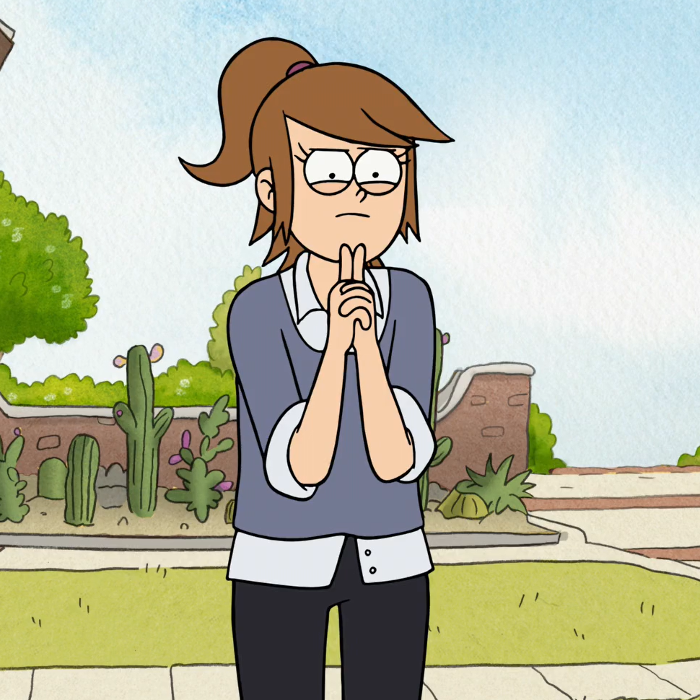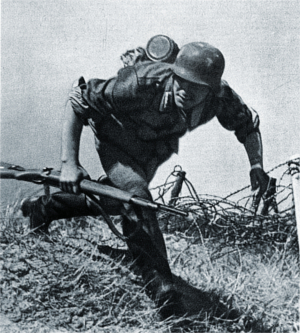Imperial […] subjects began to smuggle opium in China as early as the 1890s. What is more, activities changed decisively in nature and in scale during the 1930s and 1940s. In decades, the zaibatsu became involved and the imperial government itself began to and sell hard narcotics—not just opium—in contempt of international treaties domestic Chinese law.
Related to this last point, a sea change in normative attitudes toward the use of opium and drugs derived from opium had taken place by the early twentieth century. Even in the second half of the nineteenth century, moderate consumption of opium viewed in many quarters—Western and Chinese alike—as little different from that of alcohol.
Régimes of various sorts—from the worldwide British Empire to local Chinese warlords—embraced opium as a legitimate source of revenue. But with the later manufacture of far more potent narcotics such as morphine and heroin, consumption perforce rose beyond moderation, and by the 1910s and 1920s, individuals and régimes that relied on such addictive drugs to gain revenue did so in the face of mounting moral censure.
Imperial […] opium operations sprang from three motives. Above all was the need to finance collaborator states such as the Manchu, Mengjiang, East Hebei, North China Provisional, Reformed, and Wang Jingwei régimes. According to the restored Manchu emperor, Puyi, for example, the Manchu empire garnered 300 million yuan, or about one-sixth of its total revenues, from opium.³
Second, opium funded undercover operations that facilitated [Imperial] aggression. Third, opium profits went to rightwing societies in Japan, and there is even some evidence to link laundered wartime opium monies with early postwar conservative parties.⁴ Wartime GMD propaganda averred that [I]mperial Japan used drugs to poison China into submission, and some [Axis] war criminals detained in the PRC testified to that effect in the 1950s.⁵
But it is probably more correct to say that opium raised sorely needed revenue for [Imperial] aggressors—just as it continued to do so for Chinese warlords, criminal elements, the GMD, and [purportedly] even the Chinese Communist Party (CCP). Twentieth-century Japan lacked the wherewithal to be an imperial power, so its leaders latched on to opium as a poor man’s fiscal panacea.⁶ Yet Tokugawa and Meiji Japan had virtually no drug problem at home and had never relied on opium as a form of government revenue. Only the will to empire created this fiscal need.
Opium operations took place in three overlapping stages. Stage one lasted from the 1890s through the Manchurian Incident which ended with the Tanggu Truce in May 1933. Stage two began in June 1933 with the creation of a demilitarized zone (DMZ) in east Hebei as stipulated by those Accords, and ended with the establishment of the Kô-Ain (Asia Development Board) in December 1938. Stage three began in December 1938 and ended in August 1945.
In stage one imperial subjects smuggled drugs in Chinese treaty ports under the protection of extraterritoriality. These riff-raff carpetbaggers or tairiku rônin enjoyed support from consular authorities in treaty port concessions and from imperial armed forces in colonial areas such as the Guandong Leased Territories. For instance, Consul (and postwar Prime Minister) Yoshida Shigeru described the situation in Tianjin in December 1922 as follows:
Of the 5000 Japanese residents in Tianjin, seventy percent deal in morphine or other illegal substances. Almost all businesses traffic in these goods, even eateries and general stores, not just medicinal firms. […] Police crackdowns here are not as strict as in Dalian, and the Consulate’s policy is to arraign only the most flagrant violators. We prosecute only those caught by [Chinese] customs authorities or those uncovered in other crimes. We don’t arrest criminals or investigate crimes on our own. If we did so thoroughly, no Japanese would be left in Tianjin.⁷
In stage two, trafficking by carpetbaggers continued with connivance from consular officials. However, it also expanded south of the Wall in the eastern Hebei DMZ created by the 1933 truce. Under the terms of that truce, only Chinese units were actually forced to leave the DMZ whereas [Imperial] forces could enter at will. This DMZ fell under the control of Yin Rugeng’s “Regime for East Hebei Autonomy and the Containment of Communism” set up at Tongzhou in November 1935, and imperial subjects sold opium with impunity in this area.
Furthermore, zaibatsu such as Mitsubishi shôji and Mitsui bussan liberally interpreted provisions in the Accords to extend the DMZ out to sea and smuggle Iranian opium into north China under formal Foreign Ministry supervision.⁸ Thus imperial […] trafficking in stage two was no longer confined to individuals in Guandong or the treaty ports; the zaibatsu now operated in China proper with government backing.
Finally, stage three lasted from late-1938 to August of 1945. In December 1938 [the Imperialists] created the Kô-Ain—headed by the prime minister plus his army, navy, foreign, and finance ministers—a body that later became the Greater East Asia Ministry. It ran opium operations through a Kalgan branch office that worked hand-in-glove with the Mengjiang régime, created in 1939, which also was headquartered in Kalgan.
Historian Eguchi Keiichi shows that [Imperial] officials controlling this collaborator régime encouraged local consumption of the drug and taxed profits from it. They set up an opium monopoly, got farmers to grow poppies on a large scale, bought up the harvests, processed these into raw opium, refined that into heroin and morphine, and exported these narcotics to other parts of China and to Southeast Asia (see chart).
To sum up, then, in stage one, individual imperial subjects trafficked in [Imperial] treaty port concessions and colonies under the protection of extraterritoriality. In stage two, zaibatsu under Foreign Ministry direction extended smuggling south of the Wall by exploiting provisions of the Tanggu Truce. In stage three, the imperial […] government manufactured and exported narcotics from Mengjiang.
(Emphasis added. Click here if you have time to read more.)
Opium provides one cogent reason to favor the leftwing Fifteen-Year War view. True, there is no “smoking gun” document to prove conclusively that [the Imperialists] began or escalated the war expressly because of opium. Nevertheless, opium seems to be a thread that runs throughout the whole fifteen-year period. And, what is more, opium links six areas—east Hebei, north Shanxi, Rehe, Chahar, Suiyuan, and Pearl Harbor—that were crucial in [Imperial] decisions to extend hostilities at five key points in time: May 1933, June 1935, November 1935, July 1937, and December 1941.
As noted, [the Empire of] Japan never contented itself with the three provinces of “Manchuria” proper; it affixed Rehe, a fourth province in Inner Mongolia. The 1931 expansionist jingle, “Our lifeline runs through Manchuria–Mongolia,” no doubt cloaked a desire to gain opium revenues that first accrued to the Rehe warlord Tang Yulin, and later to Zhang Zuolin and his son Xueliang.⁶⁶
The May 1933 Tanggu Truce forced the GMD to cede Rehe and to create [an Imperialist]-controlled DMZ in east Hebei that later came under a collaborator régime headed by Yin Rugeng. Mitsui bussan and Mitsubishi shôji smuggled Iranian opium into China under Foreign Ministry direction by exploiting provisions in that Truce; and Yin’s régime, set up at Tongzhou in November 1935, granted [Imperial] traffickers license to deal south of the Wall.
The Umezu-He and Doihara-Qin Accords, both signed in June 1935, were logical extensions of the Tanggu Truce that facilitated expansion of the drug trade north and south of the Wall. The Umezu-He Accords expelled GMD organs from Hebei and in effect brought that whole province into the DMZ. The Doihara-Qin Accords extended the DMZ northwest past Kalgan, almost to Changbei in Chahar, and also removed pro-GMD leaders from this Inner Mongolian province.
The Guandong Army suborned Mongol collaborators Li Shouxin and Wang De to invade Chahar in December 1935 and likewise persuaded Li Shouxin to invade Suiyuan in November 1936. Thus, [the Imperialists] instigated aggression in Chahar and Suiyuan long before gunfire echoed at Marco Polo Bridge—whoever fired the first shot. Thus, we may perhaps infer that, having seized opium-producing areas in Rehe, imperial Japan also craved those in Chahar and Suiyuan—especially Suiyuan which was a rich poppy-growing area.
The scholarly consensus on the Sino-Japanese War depicts Marco Polo Bridge in July 1937 as a great watershed. But that view should be reconsidered in light of imperial […] opium operations. Hostilities near the Bridge, after all, were soon settled locally. Instead, developments at Shanghai, Kalgan, and Tongzhou deserve more attention; and opium figures as a catalyst in the last two cities. Kalgan in Inner Mongolia would become the capital of the Mengjiang “Federal Régime for Mongol Autonomy” which stretched into north Shanxi.
From Kalgan, as Eguchi shows, Kô-Ain officials manufactured and exported narcotics to the rest of China and to Southeast Asia. Inner Mongolia was one of three areas where decisive [Imperial] escalations took place in the summer of 1937—the others being central China at Shanghai and north China near Tongzhou. [The Imperialists] launched these offensives, as Hata argues, in response to heightened Chinese resistance. A key problem, then, is to explain why resistance intensified and why [the Imperialists] tried to quash it with troops from home.
Certainly Chinese nationalism and anti-Japanese feeling had been building since 1931, but the July 1937 Tongzhou Incident provides important insights. Tongzhou, on the DMZ border near Beijing (then Beiping), was the seat of Yin Rugeng’s collaborator régime under which imperial […] opium operations flourished.
But Chinese collaborator forces near Tongzhou revoked on July 29, 1937; and, much as in the 1928 Jinan Incident, Chinese rioters killed 223 imperial subjects living in Tongzhou, many of whom had been opium dealers. China Garrison Commander Kazuki Kiyoshi reported 212 imperial subjects killed at Tongzhou and noted that 108, or a bit over half, were Koreans.⁶⁷
Hence, we can surmise that the Chinese in Tongzhou and east Hebei hated Japanese and Korean drug dealers alike, and that trafficking by those imperial subjects played some rôle in hardening China’s will to resist—though, of course, this was but one factor.
Meanwhile, the media in [the Empire of] Japan churned out sensational stories about helpless Japanese women and children being butchered and mutilated in Tongzhou. The jingoism fomented by this yellow journalism did not cause, but certainly abetted, Konoe cabinet plans to dispatch more divisions to China—the act that kicked off a full-scale war.
This “Tongzhou Massacre” permitted the Army and gove[r]nment to justify stepping up the war in China in order to protect Japanese lives and property. Even government critics such as Masaki Hiroshi or the former Communist Party member Yamakawa Hitoshi waxed indignant over Tongzhou at that time. What is more, rightwing Japanese today still cite this “massacre” at Tongzhou to legitimize [the Imperialists’] escalation of the war against China, and also to downplay or deny the Nanjing Atrocity.⁶⁸
Such insights provided by imperial […] opium operations help bridge the four-year gap between the Tanggu Truce of May 1933 and the start of full-scale war in mid-1937. Opium, thus, divulges some key continuities between the two seemingly disparate China wars.
Mengjiang opium, however, may link the China and Pacific wars as well. In November 1941, the Tōjō government issued a final reply to U.S. demands for a total troop withdraw from China. [The Empire of] Japan tacitly consented to a limited, gradual pull-out from China proper. In fact, the Imperial Army high command had already planned such a pull-out on its own initiative.⁶⁹
But [the Eastern Axis] was nevertheless resolved to attack Pearl Harbor if Cordell Hull rejected its last compromise proposal, one stipulation of which held [that the Imperialists] would “occupy Mengjiang for another twenty-five years or so” even if a ceasefire were to be reached with China.⁷⁰
All of this supports my theory that World War II actually began in 1931.
Further reading: Opium Regimes: China, Britain, and Japan, 1839–1952
The Opium Empire: Japanese Imperialism and Drug Trafficking in Asia, 1895–1945

